Sponsored by ReEnergize Texas, the event will feature speeches by leaders in the student climate change movement, as well as a diverse group of Texas Representatives and Senators.
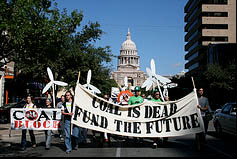 When: Monday, March 30th
When: Monday, March 30th
Rally: 9:30am-10:30am
Lobby Appointments: 10:30am-2:30pm
Where: Texas Capitol (north of 11th and Congress)
Register at ReEnergizeTexas.org
Hundreds of youth from all over Texas will converge at a rally and a lobby day at the State Capitol for clean energy and climate justice! We will lobby for:
* Increasing distributed solar to 2,000MW of generation
* Stopping all new coal-fired power plants
* Creating programs that help disadvantaged youth stay on track to complete high school while improving energy efficiency in low-income homes
This promises to be a powerful moment in Texas grassroots politics. Join us 9:30am-10:30am for great speakers from the movement and the State Legislature including Senator Rodney Ellis, Representative Tara Rios Ybarra, and Public Citizen Director Tom “Smitty” Smith.
Lobby Day training will happen on Sunday, March 29th, 3:45pm-6:00pm. This training is crucial for those who want to play speaking roles during lobby visits. We will have materials, Q&A, and role play exercises.
The Texas Legislature only meets every 2 years. If we want a clean and just energy future for Texas, we have to go to the Capitol and make our voices heard. Join us!
Posted in Global Warming | Tagged Clean Energy, climate change, climate justice, coal moratorium, Coal Plants, distributed solar, Energy Efficiency, grassroots politics, rally and lobby day, reenergize texas, student climate change movement, Texas, texas capitol, Texas Legislature, Texas Representatives and Senators |
Here are some interesting articles I’ve read this week, which I think are well worth reading in full.
 Texas is taking a greater interest in global warming by Randy Lee Loftis at the Dallas Morning News
Texas is taking a greater interest in global warming by Randy Lee Loftis at the Dallas Morning News
The Fight Plan for Clean Air by Kate Galbraith and Felicity Barringer, New York Times (word on the street that EPA will declare heat-trapping gases dangerous pollutants, keep your fingers crossed)
Solar’s time to shine in Texas? by Bill Dawson at Texas Climate News
The Fresh Prince of Clean Air: Prince Charles says financial crisis is ‘nothing’ compared to climate change, at Grist
Last chance for a slow dance? All the world fiddles as we near global warming’s point of no return by Greg Harman at the San Antonio Current — digg it up
Posted in Energy, Global Warming | Tagged bill dawson, clean air, Dallas Morning News, felicity barringer, Global Warming, Greg Harman, kate g, Kate Galbraith, New York Times, randy lee loftis, san antonio current, solar, Texas, texas climate news |
Breaking, wicked-sweet news from the U.S. Department of Energy:
FOR IMMEDIATE RELEASE
Thursday, March 26, 2009
Obama Administration Announces Additional $208,759,900 for Local Energy Efficiency Improvements in Texas
Block Grants to Support Jobs, Cut Energy Bills, and Increase Energy Independence
WASHINGTON – Vice President Joe Biden and Energy Secretary Steven Chu today announced plans to invest $3.2 billion in energy efficiency and conservation projects in U.S. cities, counties, states, territories, and Native American tribes. This includes $208,759,900 for state, county and city efforts in Texas. A detailed breakdown is below.
Today’s announcement builds on an investment of $545,757,732 in Texas weatherization and energy funding announced by the Administration on March 12th and detailed at energy.gov/recovery.
“These investments will save taxpayer dollars and create jobs in communities around the country,” said Vice President Biden. “Local leaders will have the flexibility in how they put these resources to work – but we will hold them accountable for making the investments quickly and wisely to spur the local economy and cut energy use.”
The Energy Efficiency and Conservation Block Grant program, funded by President Obama’s American Recovery and Reinvestment Act, will provide formula grants for projects that reduce total energy use and fossil fuel emissions, and improve energy efficiency.
The funding will support energy audits and energy efficiency retrofits in residential and commercial buildings, the development and implementation of advanced building codes and inspections, and the creation of financial incentive programs for energy efficiency improvements. Other activities eligible for use of grant funds include transportation programs that conserve energy, projects to reduce and capture methane and other greenhouse gas emissions from landfills, renewable energy installations on government buildings, energy efficient traffic signals and street lights, deployment of Combined Heat and Power and district heating and cooling systems, and others.
Of that sum, the City of Austin would get $7,492,70, Dallas $12,787,300, Houston $22,765,100, San Antonio $12,897,00, Georgetown $201,900, New Braunsfels $498,200, and San Marcos $498,100. The State Energy Office would also get $45,638,100.
That’s a lot of weather stripping and double panes:
[youtube=http://www.youtube.com/watch?v=pezKEkBIhqA]
A detailed breakdown of funding to state, city, and county governments after the jump.
Continue Reading »
Posted in Efficiency | Tagged Austin, dallas, doe, double panes, energy audits, Energy Efficiency, energy efficiency and conservation block grant program, houston, Obama administration, recovery and reinvestment act, retrofits, San Antonio, state energy office, Texas |
 Over the past three years, our country has experienced a paradigm shift. All across the nation, diverse voices are beginning to rise to the climate challenge, and they are all calling for action. At this moment our generation has the opportunity to offer a bold new vision of our energy future.
Over the past three years, our country has experienced a paradigm shift. All across the nation, diverse voices are beginning to rise to the climate challenge, and they are all calling for action. At this moment our generation has the opportunity to offer a bold new vision of our energy future.
On March 28-30 2009, at Huston-Tillotson University, one of the oldest Historically Black Universities in the state, will host the second-ever ReEnergize Texas Summit. Young people from across the state of Texas will converge in Austin for the largest youth climate conference ever held in Texas.
In the first two days of the summit hundreds of young people will be engaged by speakers, workshops, and panels addressing the many aspects of climate change. They will meet in regional groups to network for future actions, and they will hear political leaders discuss their positions on climate change. On Monday, March 30th, these young people will march from Huston-Tillotson in East Austin across Interstate 35, a long-recognized racial barrier in the city of Austin, and will walk to the Capitol Building where they will lobby the State Legislature for climate change legislation.
Keynote speakers include:
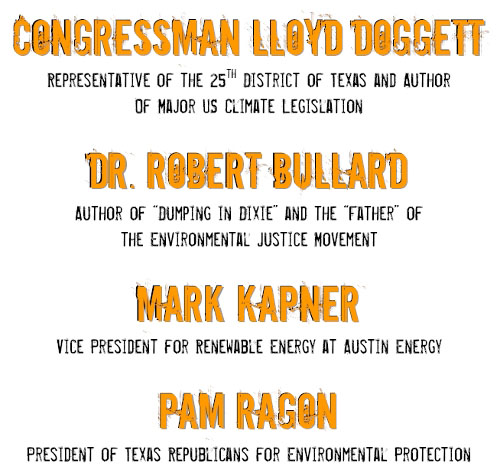
The summit is a primarily youth-focused event, but people from all walks of life are welcome — especially to the Lobby Day Monday! For more information on ReEnergize Texas, the conference agenda, and to register, visit http://www.reenergizetexas.org/
Posted in Global Warming | Tagged Austin, Austin Energy, climate change, congressman lloyd doggett, dr. robert bullard, dumping in dixie, environmental justice, Huston-Tillotson University, mark kapner, pam ragon, reenergize texas, ReEnergize Texas Summit, renewable energy, state legislature, Texas, texas republicans for environmental protection |
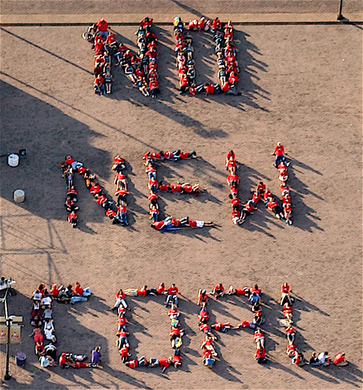 Yesterday morning we held a press conference to highlight the importance of the proposed coal moratorium bill, SB 126, sponsored by State Sen. Rodney Ellis, and its companion bill in the house, HB 4384, sponsored by Rep. Allen Vaught.
Yesterday morning we held a press conference to highlight the importance of the proposed coal moratorium bill, SB 126, sponsored by State Sen. Rodney Ellis, and its companion bill in the house, HB 4384, sponsored by Rep. Allen Vaught.
SB 126 , which went into committee late Tuesday night, would put a temporary moratorium on authorizations for new coal-fired power plants that do not capture and sequester their carbon emissions. If all of Texas’ 12 proposed coal plants were built, they would emit an additional 77 million tons of carbon dioxide into the atmosphere. Top climate scientists, most notably James Hansen, have advocated for a coal moratorium as one of the top priorities to address climate change.
This legislation would also give Texas time to take a breath, see what federal carbon legislation will come down from Washington, and re-evaluate our energy plan. We expect carbon emissions to be given a price as a result of a federal climate change bill, and this would make the energy from coal considerably more expensive.
Floor Pass, the Texas Observer’s legislative blog, reports:
Environmentalists support these bills, but some feel they could be stronger. Both bills grant exceptions to facilities that capture and sequester some of the carbon dioxide they produce. Vaught’s bill mandates that a minimum of at least 60 percent of the carbon dioxide must be captured and sequestered in order for the exemption to apply. Ellis’ bill does not specify the amount.
“We definitely would support 100 percent reduction of carbon dioxide,” says Karen Hadden, director of Sustainable Energy and Economic Development Coalition. “We should not be adding carbon dioxide to our air at this point in time. It’s too risky in terms of climate change. Companies can do it, and they should.”
Representatives from communities currently fighting coal plants were on hand to discuss how this legislation will protect their families from dangerous health effects such as asthma and increased autism rates and improve local air quality. It was really moving to hear community members telling their own stories of how proposed coal plants would affect their lives. If you’re interested in hearing their stories, check out the video feed from the press conference. Look for March 25, Press Conference: Senator Rodney Ellis. That’s us!
The story got picked up in a couple other media outlets. All the news that’s fit to link:
“Foes take power plant fight to Austin” by Denise Malan, Corpus Christi Caller Times
“Texas coal opponents call for a temporary moratorium on new plants” by Barbara Kessler, Green Right Now
And if you STILL WANT MORE, check out our press release after the jump.
Continue Reading »
Posted in Coal | Tagged carbon capture, carbon legislation, clean economy coalition, climate change, Coal, coal moratorium, coal plant, corpus christi bay, Corpus Christi Caller-Times, floor pass, hb 4383, Karen Hadden, las brisas, mulit county coalition, patricia broadwell, Public Citizen, public citizen texas, representative allen vaught, roger landress, sb 126, SEED Coalition, senator rodney ellis, sequestration, sweetwater, Texas, texas medical association, texas observer, Tom "Smitty" Smith, white stallion |
 Good mooooooorning Texas! Just woke up, haven’t even gotten out of my pajamas or had my coffee (okay, I’m running a little late), but I couldn’t wait a moment longer to spread the good news. We’ve hit the big Times.
Good mooooooorning Texas! Just woke up, haven’t even gotten out of my pajamas or had my coffee (okay, I’m running a little late), but I couldn’t wait a moment longer to spread the good news. We’ve hit the big Times.
Yes, that Times. The New York Times.
Check out the following post from Kate Galbraith at the New York Times Green, Inc blog. Look for cameos by our very own David Power, Rep. Mark Strama, and the Austin Solar Plant.
TEXAS AIMS FOR SOLAR DOMINANCE
The Lone Star State leads the country in wind-power. Now Texas aims to ramp up its solar production too.
This week the state senate is considering an avalanche of bills that would boost state incentives for solar power, and the entire legislative session has become known as the “solar session.”
Altogether, according to David Power, the deputy director of Public Citizen Texas, a consumer and environmental advocacy group, there are 69 renewable energy bills before the legislature, and over 50 of them promote solar power – far more than ever before.
“There are senators and representatives that are talking about solar that have never mentioned the word probably in their lives,” he said. “We’ve actually heard the term ‘global warming,’ and two years ago that was called ‘the G word’ – you didn’t talk about it.”
Mark Strama, a state representative who is a leading promoter of renewable energy, has introduced at least five green bills this year (including a measure that would allow local governments to create a property tax financing program for solar, along the lines of several California cities).
“It just seems like everybody recognizes our leadership in wind, and that government policy got us where we are today in wind,” he told me last month.
In solar, he added, “We need to catch up.”
Some businesses, concerned about higher energy prices, urge caution.
“The state should avoid picking economic winners and losers in our economy through subsidizing solar – or any energy source – at the expense of the residential, commercial and industrial consumers who contribute significantly to the Texas economy,” said Luke Bellsynder, the executive director of the Texas Association of Manufacturers, in an e-mail message.
He also said, however, that his group supported incentives and tax abatements for solar, and broadening the state’s energy portfolio.
Earlier this month, the city of Austin, which is aggressively pursuing renewable power, unanimously gave a go-ahead to a private company to build the largest photovoltaic plant in the country, so that the local utility, Austin Energy, can buy the electricity produced.
However, the city met fierce opposition from struggling local technology firms and other groups, who complained about the prospect of higher electric bills.
Posted in Energy, Renewables | Tagged austin solar plant, david power, Global Warming, green, inc, Kate Galbraith, luke bellsynder, mark strama, New York Times, Public Citizen, public citizen texas, renewable energy, solar, solar power, Texas, texas association of manufacturers |
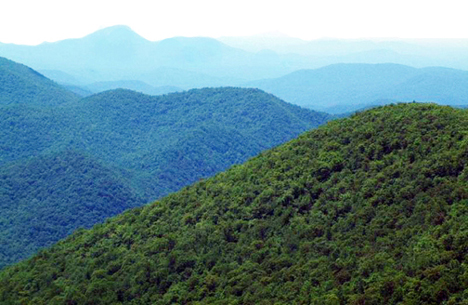
MOST EXCELLENT news from Dina Cappiello at the Associated Press:
WASHINGTON – The Environmental Protection Agency put hundreds of mountaintop coal-mining permits on hold Tuesday, saying it wants to evaluate the projects’ impact on streams and wetlands.
The decision by EPA administrator Lisa Jackson targets a controversial practice that allows coal mining companies to dump waste from mountaintop mining into streams and wetlands.
It could delay 150-200 surface coal mines, including mountaintop removal operations, according to the EPA.
Those permits are issued by the Army Corps of Engineers, an agency that has been criticized by environmental groups and has been sued for failing to thoroughly evaluate the environmental impact of mountaintop removal.
Under the Clean Water Act, companies cannot discharge rock, dirt and other debris into streams unless they can show that it will not cause permanent damage to waterways or the fish and other wildlife that live in them.
Last month, a three-judge appeals panel in Richmond, Va., overturned a lower court’s ruling that would have required the Corps to conduct more extensive reviews. The appeals court decision cleared the way for a backlog of permits that had been delayed until the lawsuit was resolved.
The EPA’s action on Tuesday leaves those permit requests in limbo a little longer.
The EPA said in a statement that it would be actively involved in the review of the long list of permits awaiting approval by the Corps, a signal that the agency under the Obama administration will exercise its oversight. The EPA has the authority to review and veto any permit issued by the Corps under the Clean Water Act, but under the Bush administration it did that rarely, environmentalists say.
The freeze only appears to apply to permits for new mines, and not those already in operation, but just the same — this is truly fantastic news for opponents of coal, the communities living near these mountains, and the environment in general. Happy Day! Purple Mountains Majesty! Yonder Mountain String Band! Rocky Mountain High! My Home is in the Blue Ridge Mountains!
Posted in Coal | Tagged ap, appalachian mountains, army corps of engineers, associated press, clean water act, Coal, coal mining, coal mining companies, dina cappiello, Environmental Protection Agency, EPA, Lisa Jackson, mountain top removal, mountaintop mining, mountaintop removal, Obama administration, richmond, Texas, va |

State Rep. Eddie Rodriguez, D-Austin, discusses a bill that would monitor coal waste at a press conference at the Capitol on Thursday afternoon. Photo courtesy of Paul Chouy at The Daily Texan
A while back we held a press conference to highlight the scale of Texas’ coal combustion waste problem. The Natural Resources Defense Council (NRDC) recently released a report which found that Texas is the worst state in the nation in terms of toxic coal-ash waste that will result from proposed dirty coal-fired power plants. I could tell you all about it, or let the media that picked up the story speak for themselves. Today I am le tired and pick door number two.
So here it is, all the news that’s fit to link:
Lawmakers search for cleaner, safer ways to deal with excess coal waste,” by Matt Stephens with The Daily Texan
Environmental agency says Texas leads nation in production of coal ash waste,” by Randy Loftis at the Dallas Morning News
You can also watch a video of the press conference, courtesy of the House Archived Broadcasts. Look for the link at 3/12/09 titled “Press Conference – Coal Combustion Waste – Sponsored by Rep. Rodriguez.” Check it out to hear Texas State Rep. Eddie Rodriguez (D-Austin) discuss his bill, HB 1450, which would improve the regulation of coal combustion waste, and to hear Travis Brown, president of Neighbors for Neighbors, speak about the danger coal combustion waste represents to human and environmental health.
NRDC’s new coal combustion waste site, launched along with the report, is also worth checking out. If you find the dropdown to see Texas’ state specific profile, you can find a map of existing and proposed coal plants in Texas as well as a statistical breakdown of the coal waste and toxic metals from existing and proposed plants. Scary stuff.
And of course, if you really, really want it… you can read the press release after the jump.
Continue Reading »
Posted in Coal | Tagged coal ash, coal ash waste, coal combustion waste, daily texan, Dallas Morning News, eddie rodriguez, hb 1450, matt stephens, natural resources defense council, neighbors for neighbors, nrdc, randy loftis, Texas, Texas State Representative Eddie Rodriguez, toxic coal-ash waste, travis brown |
Public Citizen will be testifying on nearly three dozen bills today during committee meetings in the House and Senate. You can watch the action in the House or the Senate by going to the individual committees. Be sure to tune in to our 10am Press Conference on a coal moratorium by clicking on the link to the Senate Press Room in the video feeds. Links to the committees we’ll be testifying in all day today:
House Agriculture and Livestock 7:30 am
Senate Business and Commerce 8am (where most of the solar bills will be heard)
Senate Natural Resources 1pm (including the coal moratorium)
House State Affairs 1pm
Also, if you’re looking for something to do today, come down and show your support for solar energy, the coal moratorium, or any of the other over 30 bills we’ll be testifying on.
For those of you interested in some light reading, I highly reccomend Forecast: The Global Conseqeunces of Climate Change by Stephen Faris. As an international correspondant, he has seen how the conflict in Darfur began as a conflict over resources, and how the wildfires of Australia have decimated the countryside. This is just a taste of things to come in a world of disrupted and rapidly changing climate. The following excerpts are available:
Part 1: The Florida Keys are sinking
Part 1: Can insurance cover the costs of climate change?
Part 1: Who will be able to afford to live on the coast?
Part 2: Pathogens find new habitats
Part 2: Countries could backslide into poverty
Part 2: How disease relates to carbon dioxide
Part 3: Easier passage through the Arctic
Part 3: A scramble for control of the Arctic
Part 3: Opening the Arctic to damage
Also, for anyone who missed it, an article in today’s Washington Post about the EPA qietly delivering to Obama a finding that carbon dioxide is a dangerous pollutant,(like we needed the EPA to tell us that) opening the door for states to regulate emissions standards for cars, permitting of CO2 in power plants, etc.
Posted in Global Warming | Tagged Carbon Dioxide, climate change, Coal, coal moratorium, EPA, Global Warming, Public Citizen, renewable energy, Rodney Ellis, solar, solar power, Texas, Texas Legislature |
 Hey folks, tomorrow a whole host of solar bills are going into be heard in the Senate Business and Commerce Committee. Our friends over at Environment Texas have a petition up where you can show legislators your support for solar. The sun’s setting on this petition, so sign up today!
Hey folks, tomorrow a whole host of solar bills are going into be heard in the Senate Business and Commerce Committee. Our friends over at Environment Texas have a petition up where you can show legislators your support for solar. The sun’s setting on this petition, so sign up today!
From the horse’s mouth, here’s the email from Luke Metzger, Director of Environment Texas. Poetic, ain’t it?
With the first day of spring upon us, we’re already experiencing the warmth and life that the Texas sun provides.
For the first time, the Legislature is taking a serious look at using the sun to solve our energy problems by investing in solar power. With the right support, Texas could become a world leader in solar power, helping protect our environment and putting people back to work in good green jobs.
We can make it happen, but we need your help. Please sign our petition asking the Legislature to Go Solar!
Decisions made by policy makers in the next year will determine whether Texas can ride the solar wave, capturing the vast potential of solar power for our state. Texas has the best solar potential in the nation and we could power the entire state many times over with our abundant sunshine.
Texas should spur the development of solar power within the state by creating rebates and incentives to make it easier for homeowners and businesses to install solar on their rooftop, investing in solar for schools and large-scale solar farms, requiring utilities to pay consumers a fair price for surplus electricity generated, and prohibiting homeowners associations from blocking solar.
Posted in Energy, Renewables | Tagged business and commerce, environment texas, luke metzger, Public Citizen, solar, Texas, vote solar |
Last week was pretty crazy for Austin — SXSW came in like a lion, and I’ll admit I am quite pleased that the city is laying quietly like a lamb once again. But though Sixth Street may be back to its sleepy Monday morning self, Public Citizen’s office is back in full swing. We’ve got a lot coming up this week: Solar Day in the Senate, Energy Efficiency hearings galore, a press conference and hearing on Sen. Ellis’ coal moratorium bill… and that just brings us to Tuesday. But before we launch headfirst into the environmentalist’s version of March Madness, let’s take a moment to regroup from last week.
From the good folks at Alliance for a Clean Texas, check out this mid-week review. A taste:
With meetings of the House and Senate State Affairs committees, House Energy Resources, House Environmental Regulation and not one but two meetings of the Senate Natural Resources Committee, the environmental agenda is in full swing in the 81st Session. This morning, Senator Lucio and Representative Gallego led a press conference highlighting legislation filed that supports investment in emerging renewable energy such as solar and geothermal. (The entire press packet is available here.) Among the benefits to investment in renewable energy? Green jobs, for one. (Stay on the lookout for green hardhats in the Capitol. You never know who’ll turn up wearing one.)
For more information on our St. Patty’s Day press conference with Sierra Club, check out Floor Pass’ Luck O’ the Lege post. You heard right, the number of renewable energy bills this session has doubled compared to last. As Mark Strama noted at the conference, “if you can just get everyone that filed a renewable energy bill to vote for a renewable energy bill, you’ll pass them all.” We should be so lucky!
Legislators who have authored Renewable Portfolio Standard (RPS) bills held a press conference this morning to announce that the number of renewable energy bills filed has doubled from last session to this session. For those yet unfamiliar with the jargon, RPS is a policy tool that sets a goal for providing a certain percentage of total energy used from renewable sources like wind and biomass. You can find descriptions of the RPS bills here.
Check our Flickr photostream for photos from the press conference, and stay tuned to stay in the loop this week!
Posted in Energy | Tagged 81st session, alliance for a clean texas, biomass, Clean Energy, Energy Efficiency, floor pass, green jobs, house and state senate affairs committee, house energy resources, house environmental regulation, mark strama, Public Citizen, renewable energy, renewable portfolio standard, representative gallego, Rodney Ellis, rps, senator lucio, solar, solar day, sxsw, Texas, Texas Legislature, wind |
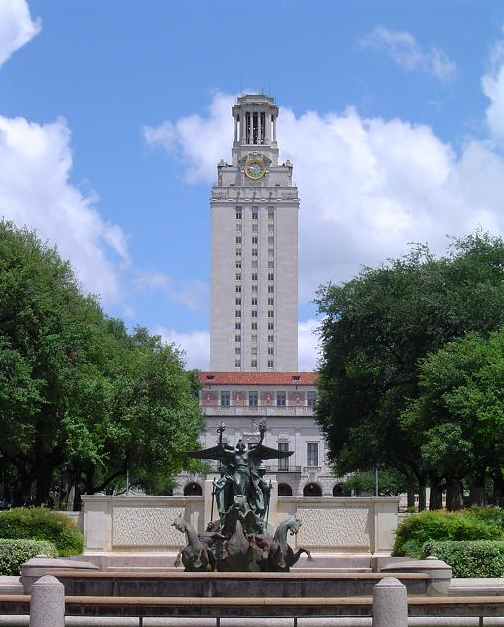 Over the past several months, researchers at the Good Company have been compiling a report to measure our own University of Texas’ emissions. Last week the results were announced…. We’ve got big feet.
Over the past several months, researchers at the Good Company have been compiling a report to measure our own University of Texas’ emissions. Last week the results were announced…. We’ve got big feet.
Thereport showed that UT’s total carbon emissions were a 292,434 metric tons of carbon dioxide equivalent in 2006. Emissions sources not required by the traditional registries are estimated to be an additional 238,237 metric tons. The vast majority of these emissions were from natural gas consumption, which totaled 233,839 metric tons of CO2.
The release of this information is an important step to be accountable for our greenhouse gas emissions. Says Assistant Director of the Campus Environmental Center and Public Citizen’s own, Druscilla Tigner:
It was exciting! This was a fantastic opportunity for the University of Texas to really stare its problems in the face, and pinpoint exactly what they need to do to reduce its impact on the environment. It’s a concrete jumping point for the campus sustainability movement.
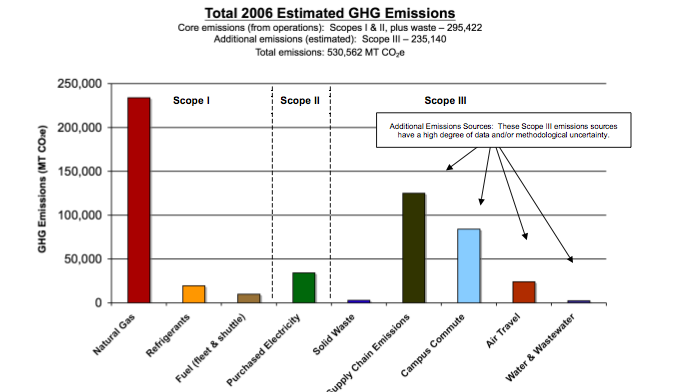 For me, one of the most interesting aspects of the report was a measure of the green house gasses emitted by a typical UT student to determine the per student carbon footprint. The report offered two general categories of students. Continue Reading »
For me, one of the most interesting aspects of the report was a measure of the green house gasses emitted by a typical UT student to determine the per student carbon footprint. The report offered two general categories of students. Continue Reading »
Posted in Consumers, Energy, Global Warming | Tagged Campus Environmental Center, Carbon Dioxide, carbon footprint, Druscilla Tigner, emissions, GHG, Good Company, greenhouse gas, natural gas consumption, Texas, University of Texas |
Last week we entered our video, Wildcatting the Sun, into Environment Texas‘ solar video contest. The winning video will be used to make the case for solar energy at a screening for key Texas lawmakers, and its creators will win $$2,000! So go to Environment Texas’ voting page, check out some of the other videos, and vote for the one you like best (cough, cough, it’d BETTER BE OURS). If you haven’t gotten a chance to see it already, check it out below.
[youtube=http://www.youtube.com/watch?v=7Dfv2yoCtjU]
Posted in Global Warming | Tagged environment texas, Public Citizen, Texas, wildcatting the sun |
A-list on Austin360.com is having a poll entitled: Which local blog is best?
Somehow we didn’t show up on their radar. Don’t worry, our feelings aren’t hurt — we know we’re still pretty new. Please give us a hand and go to their site and write us in! We’d be so honored to be a contender.
Voting ends Tuesday, the 17th (tomorrow) at 11 p.m. You can vote once every hour, as many times as you want. Show your love and help us hype Texas Vox!
UPDATE: email your vote in directly to: austin360contests@statesman.com
Posted in Uncategorized | Tagged a-list, austin360, Public Citizen, Texas, texas vox |
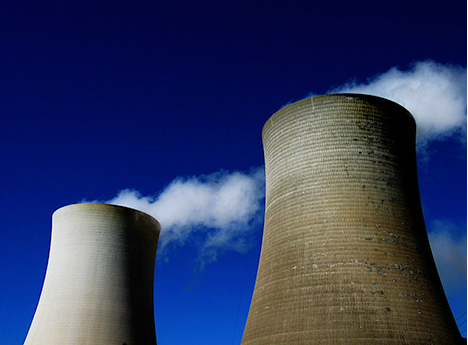
The first step towards greenhouse gas regulation is underway! On Wednesday, the EPA proposed a rule that industries measure and report their greenhouse gas emissions. The rule would apply to 13,000 facilities nationwide, including manufacturers of chemicals, oil, cement, iron and steal, automobiles, electricity generation, and more! Green Inc reports that this will cover 85%-90% of greenhouse gas emissions in the United States, and not just carbon dioxide emissions. The reports will also include emission amounts of those other things we hate to inhale, such as methane, hydrofluorcarbons, and nitrous oxide.
If put into action, emissions tracking will begin in 2010 for reports to release in 2011. Of course, this program would cost a significant amount of cash—$160 million in the first year and then $127 million each year thereafter.
The reports will allow us to pinpoint exactly how much greenhouse gas is released into the atmosphere, and from where. Though some firms are already participating in voluntary reporting, this kind of industry-wide reports will provide comparative analysis. With such detailed (and presumably accurate) information, we will also be in a better position to make informed decisions about how emission regulation should be formulated.
CNNMoney.com also reported that this information could be important to investors. For those ill-prepared companies, emission regulation could drastically affect their earnings.
Mindy Lubber, the Director of the Investor Network on Climate Risk stated:
The SEC needs to protect investors from the risks companies face from climate change, whether from direct physical impacts or new regulations. Shareholders deserve to know if their portfolio companies are well positioned to manage climate risks or whether they face potential exposure.
Public release of information would be a powerful tool to prepare companies, especially those that are energy-intensive, to be held accountable for their energy emissions. Or a good kick in the pants to take the next step to become ecologically conscious!
Posted in Consumers, Energy, Global Warming, Renewables | Tagged atmoshere, Carbon Dioxide, EPA, Global Warming, greenhouse gas emissions, regulation, reporting, SEC, Texas |
« Newer Posts - Older Posts »
 When: Monday, March 30th
When: Monday, March 30th

 Yesterday morning we held a press conference to highlight the importance of the proposed coal moratorium bill, SB 126, sponsored by State Sen. Rodney Ellis, and its companion bill in the house, HB 4384, sponsored by Rep. Allen Vaught.
Yesterday morning we held a press conference to highlight the importance of the proposed coal moratorium bill, SB 126, sponsored by State Sen. Rodney Ellis, and its companion bill in the house, HB 4384, sponsored by Rep. Allen Vaught. Good mooooooorning Texas! Just woke up, haven’t even gotten out of my pajamas or had my coffee (okay, I’m running a little late), but I couldn’t wait a moment longer to spread the good news. We’ve hit the big Times.
Good mooooooorning Texas! Just woke up, haven’t even gotten out of my pajamas or had my coffee (okay, I’m running a little late), but I couldn’t wait a moment longer to spread the good news. We’ve hit the big Times.

 Hey folks, tomorrow a whole host of solar bills are going into be heard in the Senate Business and Commerce Committee. Our friends over at Environment Texas have a petition up where you can
Hey folks, tomorrow a whole host of solar bills are going into be heard in the Senate Business and Commerce Committee. Our friends over at Environment Texas have a petition up where you can  Over the past several months, researchers at the Good Company have been compiling a report to measure our own University of Texas’ emissions. Last week
Over the past several months, researchers at the Good Company have been compiling a report to measure our own University of Texas’ emissions. Last week  For me, one of the most interesting aspects of the report was a measure of the green house gasses emitted by a typical UT student to determine the per student carbon footprint. The report offered two general categories of students.
For me, one of the most interesting aspects of the report was a measure of the green house gasses emitted by a typical UT student to determine the per student carbon footprint. The report offered two general categories of students. 


